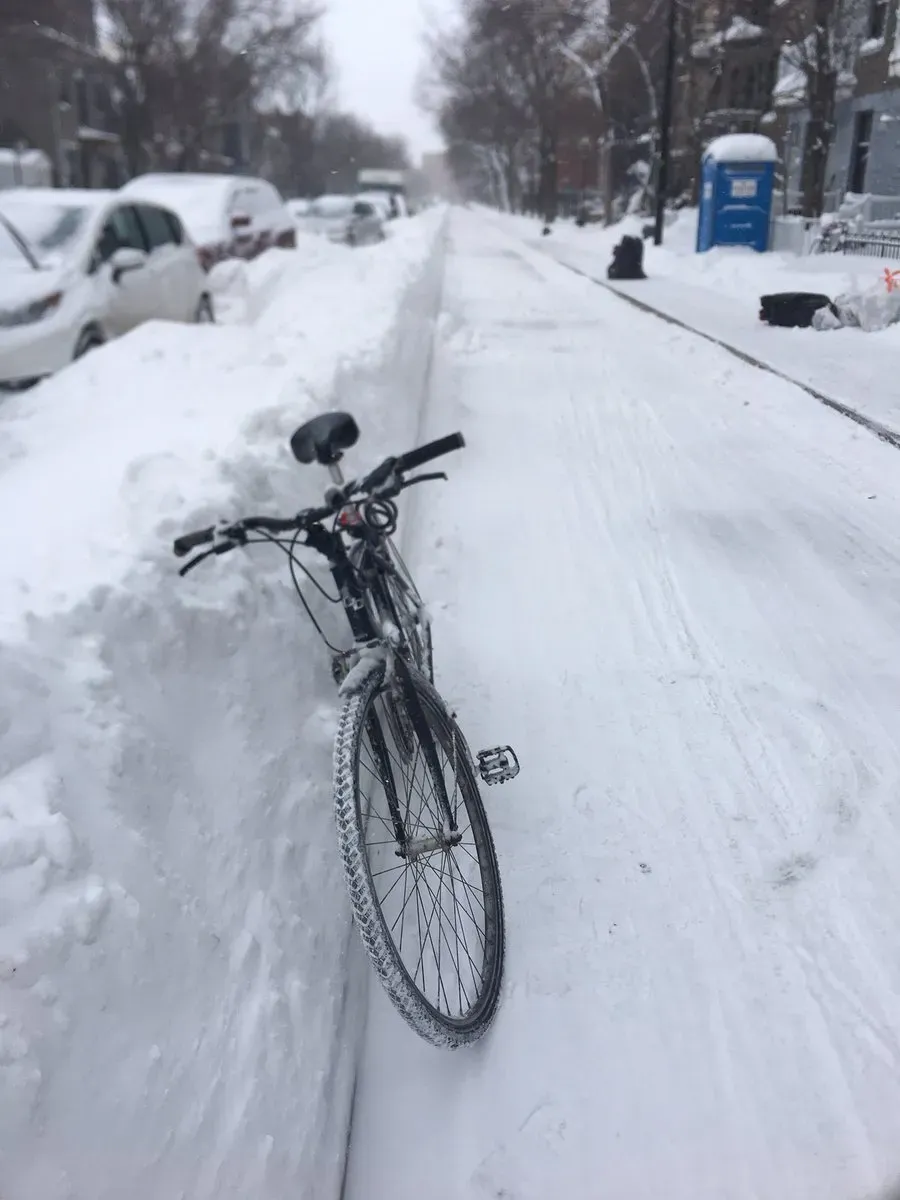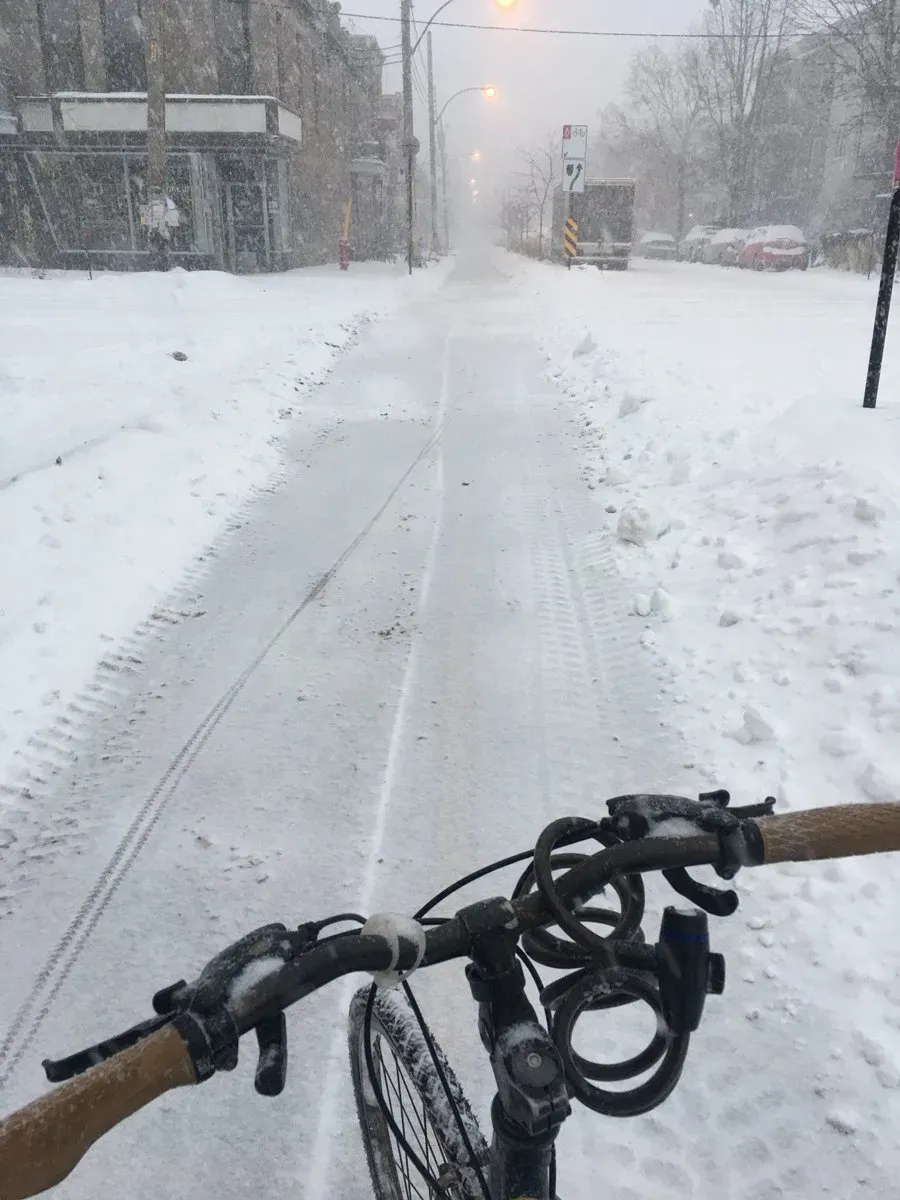I'm a Winter Bicycle Commuter
In praise of commuting by bicycle, even in snowy conditions.

In Praise of the Studded Tire
/ If you’re a regular reader of Straphanger, you’ll already know I’ve never owned a car. (Never wanted to, since the days I worked 40 hours a week as a delivery driver in my early twenties. That experience left me road-weary for a lifetime.) The money I saved by not buying, licensing, warehousing and fuelling a couple of tons of steel, plastic and glass—about $10-$12,000 a year—meant that I was able to set aside enough for a downpayment on our apartment in an old, highly-walkable, transit-rich neighborhood, on a street that probably would otherwise have been unaffordable to us.
I do, however, own four bicycles. I’ve got an old Bianchi road bike, probably of mid-1980s vintage, that I use for tooling around the neighbourhood, as well as for longer trips across the city. I’ve got a fancy-ass Specialized Roubaix, with a carbon frame, that sleeps in the basement. When the weather is fine, I take it up Mont-Royal, the hill-girdling park in the city center, and then whip down at 60 km/h, sometimes several times in a morning. Then I’ve got a beautiful, jet-black Batavus, a Dutch omafiets (or “grandma” bike, though it seems to work for grandpas too), which I bought when I became a father; both of my sons did their time in a baby seat on the back, and, even now, they sometimes hop a ride on the rattrap, “dinking,” or doubling, which is a national pastime in the Netherlands. The Batavus is heavy as hell, and riding it feels more like being on a mule or a donkey than a racehorse: it’s a reluctant starter, a comfortable coaster, and not that good at stopping (those back-pedal brakes…).
With its massive fenders, and wide tires, it’s the perfect bike for riding around in the rain, although, with only three speeds, it doesn’t take kindly to hills; I never take it on long trips. Frankly, I can see the day coming when my knees get around to saying, “Later for you, Dutch boy.”

The best investment I ever made, in terms of transportation, was my Claud Butler mountain-style bike, which I bought about 15 years ago for the lordly sum of $300, from a funky used bike store, no longer open. A pair of taciturn Salvadoran mechanics fitted it out with slush-guards and studded tires, which, at upwards of $75-per wheel, were the most expensive parts of the bike.
Now, when my book Straphanger was published, some critics objected to the fact that I’d included a chapter on bicycles in a book about public transportation. (The bike chapter was largely set in Copenhagen, one of the cities, along with Amsterdam, where North American bicycle advocates pray they’ll go when they die.) Jarrett Walker, author of Human Transit, was one of those critics: he told me, in his opinion, transit was a specific category of transport, and shoehorning bikes into that definition was too much of a stretch. I took Jarrett’s point, but pointed out the subtitle of the book was “Saving Our Cities and Ourselves from the Automobile.” I think transit—from Bus Rapid Transit to a good metro and commuter train system—has to be the foundation of cities that want to continue into the future without freeways and cars. But bicycle infrastructure (especially protected bike paths), along with infrastructure that enables other forms of active transport (I mean walking, wheelchairs, mobility scooters for seniors and the disabled, and e-scooters) are crucial components of the transit city. Not only do they solve the last-mile problem—getting people from a stop served by frequent, reliable, and safe transit to their front door—they can become a full-fledged, heavy-hauling transporation system in their own right. For proof, look at the transformation of Paris into a Dutch-style bicycle city in less than a decade.
